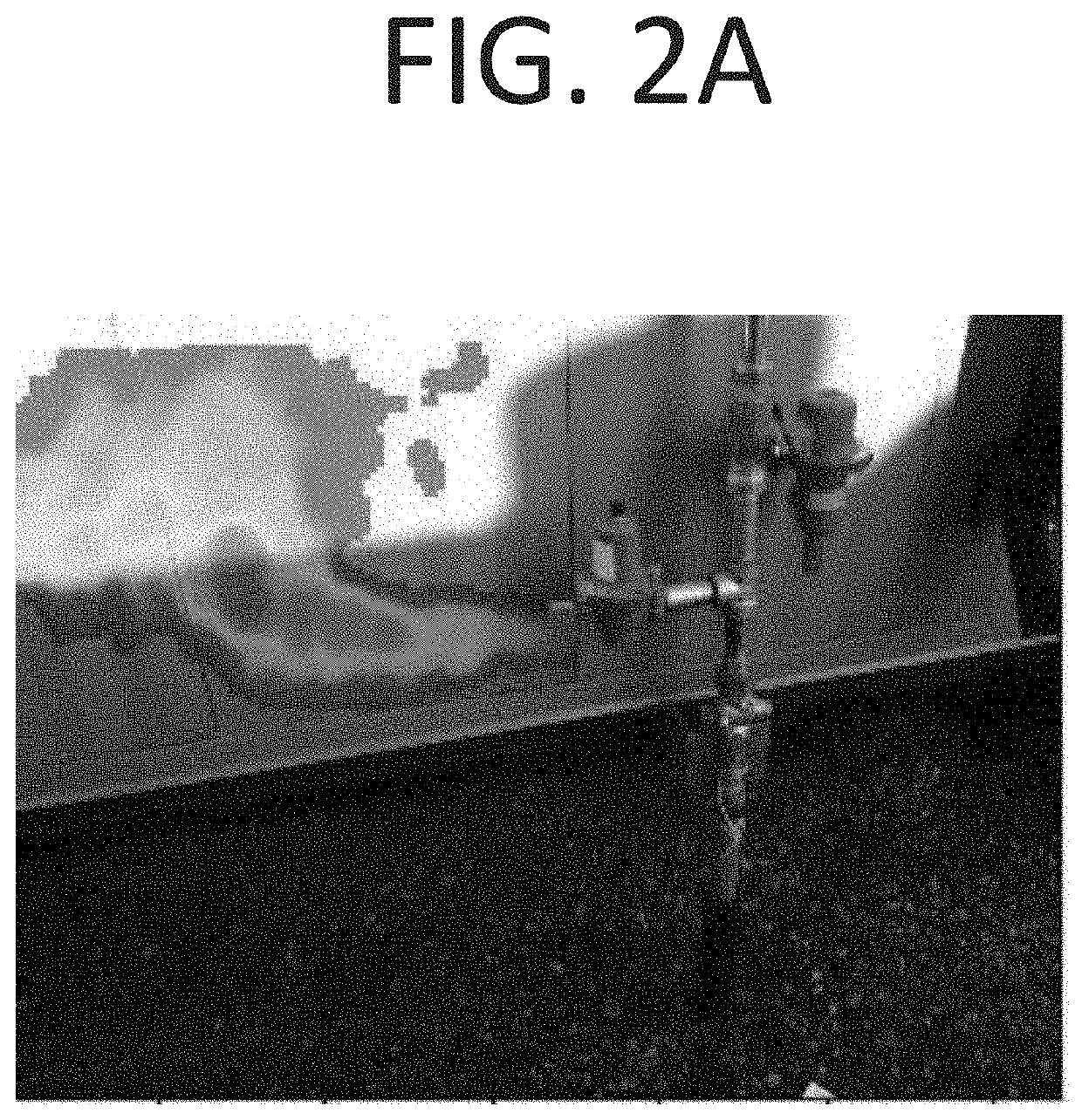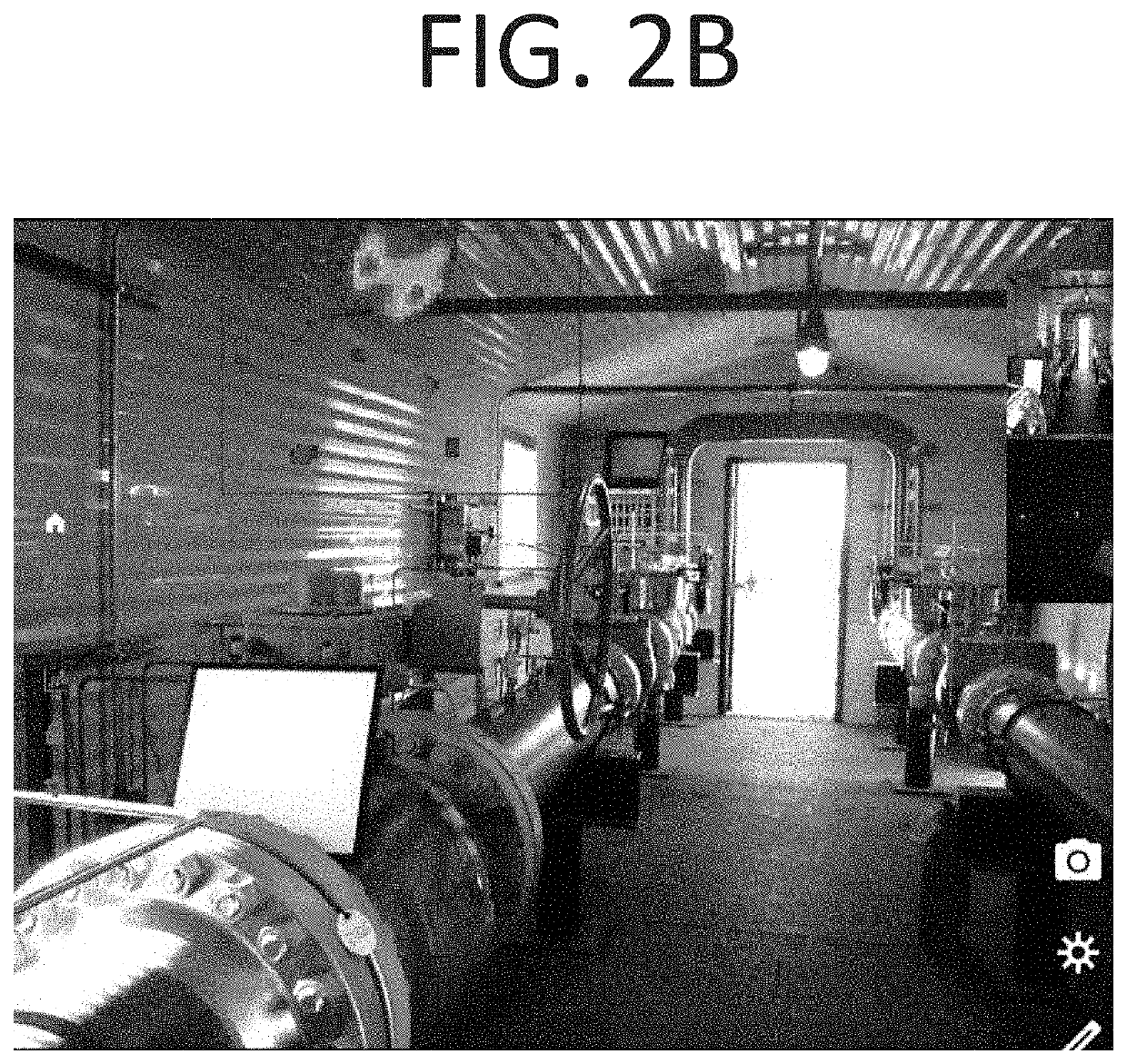Systems and methods for leak monitoring via measurement of optical absorption using tailored reflector installments
a technology of optical absorption and leak monitoring, which is applied in the direction of fluid tightness measurement, instruments, mechanical equipment, etc., can solve the problems of difficult quantification of gas leakage, limited spatial coverage of conventional point and line detectors for gas detection, and create both safety and environmental hazards, so as to achieve rapid and accurate detection, localization, and quantification
- Summary
- Abstract
- Description
- Claims
- Application Information
AI Technical Summary
Benefits of technology
Problems solved by technology
Method used
Image
Examples
example 1
tion of Gas Detection Via a Three Sided Optical Curtain
[0177]This example demonstrates detection of gas via a three sided optical curtain. FIG. 15A shows a visible camera image of a scene comprising a pipe 1502 releasing gas and a retro-reflector installment used to create the optical curtain. The pipe 1502 is a 2 inch vent pipe leaking at a rate of approximately 20 standard cube feet per hour (SCFH). The reflector installment includes a frame 1506 having retroreflective surfaces mounted behind the pipe. 3M High Intensity Prismatic Grade Reflective Sheeting 3930 is used as the retro-reflective surface. A scanning optical sensor and illuminator directs light to locations about the retro-reflective frame 1506 and detects light reflected back to the detector, thereby forming a three-sided optical curtain. The visible camera image of FIG. 15A is taken from the vantage point of the optical sensor and illuminator, which are situated a distance of about 5 meters from the pipe 1502 and 7 m ...
example 2
tion of Gas Detection at 20 Meters
[0178]Example 2 demonstrates gas detection at a distance of 20 meters using 3M 3930 retro-reflectors positioned behind a gas leak source. FIG. 16 shows a visible camera image of a room with an absorption image overlaid showing levels of absorption in false color. As shown in the figure, leaking gas can be seen in a region 1602a at the back of the room (inside a fume hood). An expanded view 1602b of the region shows the detected gas leak in greater detail. Accordingly, this example shows how a single, or small number of strategically positioned retro-reflectors can be used to detect gas leaks at tens of meters using a scanning multispectral optical sensor and co-located scanning (broadband) illuminator.
example 3
nning Over a Wide Field of View
[0179]This example demonstrates how the tailored retro-reflector installment approaches described herein can be used to allow for large fields of view to be scanned rapidly. An example is an installation using discontinuous reflectors at an oil well as depicted in FIG. 18. Such a well may typically include one or several pump jacks, measurement equipment, a separator, and tanks. A retro-reflector panel or retro-reflector stripe may be each placed behind pump jack, a separator (or, for example, in the case of an enclosed separator behind a relief vent, on top of such separator enclosure), behind measurement equipment, and behind any pressure relief valve or hatch on top of a tank. For example, in FIG. 18, four separated locations to be monitored: storage tanks (pressure relief valves and thief hatches), a compressor shed (roof vents), a separator tank roof (vent), and pump jacks are shown. It is noted that in an installation the retro-reflector might be...
PUM
| Property | Measurement | Unit |
|---|---|---|
| angle of incidence | aaaaa | aaaaa |
| reflectivity | aaaaa | aaaaa |
| angle | aaaaa | aaaaa |
Abstract
Description
Claims
Application Information
 Login to View More
Login to View More - R&D
- Intellectual Property
- Life Sciences
- Materials
- Tech Scout
- Unparalleled Data Quality
- Higher Quality Content
- 60% Fewer Hallucinations
Browse by: Latest US Patents, China's latest patents, Technical Efficacy Thesaurus, Application Domain, Technology Topic, Popular Technical Reports.
© 2025 PatSnap. All rights reserved.Legal|Privacy policy|Modern Slavery Act Transparency Statement|Sitemap|About US| Contact US: help@patsnap.com



